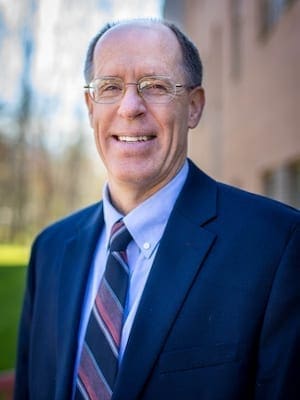Seminaries across the United States have been struggling financially for years, with a spate of mergers, campus relocations and closings driven by dwindling numbers of students.
What kind of impact are these seminary struggles having on churches, pastors and others called to seminary education?
To a certain degree, the difficulties that seminaries are facing are a mirror image of those with which churches and pastors are also struggling:
- An overall decrease in the numbers of people attending church
- A decrease in denominational support for local churches and ministries
- An increased theological polarization around several “trigger” issues that mirror the general increased polarization in society
- An increase in people looking for different ways of “doing church”
- An increase in bivocational pastors due to many of the above as well as to the renewed emphasis on church planting
In short, as churches, pastors and seminaries alike struggle with and try to adapt to these and other challenges, what does this mean in practical terms for those called to theological education?
I would argue, with quite a bit of hope, that what we are seeing in practice is a process by which churches, pastors and others called to seminary studies are being given access to theological education that more and more meets their specific needs and wishes, and in which they are having a say.
It seems to me this is happening along four main lines: the content of the curriculum, the method of delivery of the classes, the experience and background of those teaching, and the intentional building of a seminary community.
Let’s look at each of these.
1. While there are basics to any seminary curriculum, there is much room to “contextualize” it to the needs of the particular students.
It is no accident that the number of students enrolling in the master of divinity degree has been decreasing in comparison to other much shorter seminary master’s programs.
In fact, seminaries are creating more of these new master’s degrees while also cutting a significant number of credits from the master of divinity degree itself.
In this process, seminaries like Palmer Theological Seminary and College at Eastern University are partnering with church leaders, denominations, missions groups and even individual students to design curricula, degrees, certificates and workshops that best fit their needs, even in terms of the language in which they are delivered.
While to some extent this has always existed, the challenges mentioned above have given greater weight to this process.
2. Building on the first point, seminaries are adapting to the new realities of the lives of pastors, church leaders and others in terms of the delivery of the classes themselves.
This means shifting the majority of classes to late afternoon, evening and night hours for those who prefer an on-campus experience while also expanding the availability of hybrid and fully online options to those for whom it is difficult to make it to the physical classroom.
While some hesitancy still exists around whether online theological education can match the face-to-face experience, that is quickly dissipating in the face of convincing and robust evidence that, if done well, online programs tend to be at least as effective, if not more, than face-to-face ones.
3. While I don’t have any concrete evidence to state it is a trend, it seems to me anecdotally that seminaries are moving more in the direction of ensuring that students are taught by faculty who have practical ministry experience coupled with a passion for the “academic” side of theological education.
This means faculty can better understand, teach, walk with and learn from students because they know what their students are or will be going through and appreciate the practical insights and questions that come from their varied lived experiences.
4. Again, this point is more an anecdotal observation based in part on experience, the intentional building of a seminary community has become even more important as students are pulled in so many different directions at once.
At the heart of this building of community lies the process of spiritual formation of students both individually and as a group, tying them together in their common commitment to become more faithful disciples themselves as they seek to minister to others.
As a result, seminaries are realizing that spiritual formation needs to occupy a place of greater relevance in the curriculum.
In summary, as seminaries struggle along with churches and pastors through these difficult times, they are creating new opportunities for those being called to theological education to find more of what they need and want in terms of curriculum, accessibility, mentoring and a community that will nurture and encourage their processes of spiritual formation.
May God indeed lead all of us in seminary leadership to help make that the case.
Editor’s note: This is the first in a series this week focused on trends and issues in theological education.
David Bronkema serves as Dean of Palmer Theological Seminary of Eastern University, located just outside of Philadelphia, Pennsylvania.


